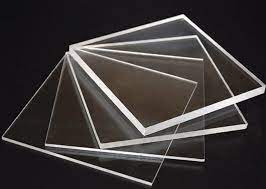Acrylic plastic, also known as polymethyl methacrylate (PMMA), is a versatile and lightweight material that has a wide range of applications in various industries. In the automotive industry, acrylic plastic is often used as a replacement for traditional glass in older cars. This is because acrylic plastic offers several benefits over glass, including increased flexibility, improved resistance to impact and weathering, and a lower weight.
Purpose
The primary purpose of using acrylic plastic in older cars is to replace the original glass windows and windshields. This is typically done for both aesthetic and functional reasons. On the aesthetic side, acrylic plastic can be shaped and formed into different shapes, allowing for more design flexibility. On the functional side, acrylic plastic is more durable and impact-resistant than traditional glass, making it a better option for older cars that may see more wear and tear. Additionally, acrylic plastic is also significantly lighter than glass, which can help to reduce the overall weight of the car and improve fuel efficiency.
Benefits
There are several key benefits to using acrylic plastic in older cars, including:
- Increased flexibility: Acrylic plastic is much more flexible than traditional glass, which means it is less likely to crack or shatter when subjected to impact. This makes it a better option for older cars, which may be more prone to accidents or collisions.
- Improved resistance to weathering: Acrylic plastic is also more resistant to weathering than traditional glass. This means that it is less likely to become discolored or hazy over time, and will retain its clarity for a longer period.
- Lightweight: Acrylic plastic is significantly lighter than traditional glass, which can help to reduce the overall weight of the car. This can improve fuel efficiency and reduce emissions.
- Low cost: Acrylic plastic is also significantly less expensive than traditional glass, which makes it a more affordable option for older cars.
How to use it
Acrylic plastic is relatively easy to use and can be cut, shaped, and formed into different shapes and sizes. This makes it a versatile material that can be used in a wide range of applications. If you’re looking to replace the glass on an older car, it is recommended to take it to a professional who has experience working with acrylic plastic. They will be able to custom-cut the acrylic plastic to the exact dimensions of your car’s windows and windshields.
Precautions
While acrylic plastic is a relatively safe and durable material, there are a few precautions that should be taken when working with it:
- Avoid using solvents or harsh chemicals when cleaning or polishing acrylic plastic, as these can damage the surface of the material.
- Acrylic plastic can be brittle in extreme temperatures, so take care not to expose it to excessive heat or cold.
- If you’re cutting acrylic plastic, take care to avoid cracking or shattering it by using sharp, clean cutting tools.
Why was this invented?
Acrylic plastic was first invented in the 1930s by two German chemists, Dr. Otto Röhm and Dr. Walter Bauer. They discovered that by polymerizing methyl methacrylate, they could create a new type of plastic with a wide range of potential applications. The material was first produced on a commercial scale in the 1940s and quickly found a wide range of applications in industries like automotive, construction, and healthcare.
Other types
Acrylic plastic is one type of plastic in a larger category of plastics known as thermoplastics. Other types of thermoplastics include:
- Polypropylene (PP)
- Polyethylene (PE)
- Polyvinyl chloride (PVC)
- Acrylonitrile butadiene styrene (ABS)
- Polystyrene (PS)
- Polycarbonate (PC)
In conclusion, Acrylic Plastic is a great material for older cars. It has several benefits over traditional glass, including increased flexibility, improved resistance to impact and weathering, and a lower weight. It can be used to replace the original glass windows and windshields of older cars, giving them a new lease of life. However, it is important to be cautious when working with acrylic plastic and to seek professional help if necessary. With the right care and maintenance, acrylic plastic can provide a durable and cost-effective solution for older cars.



